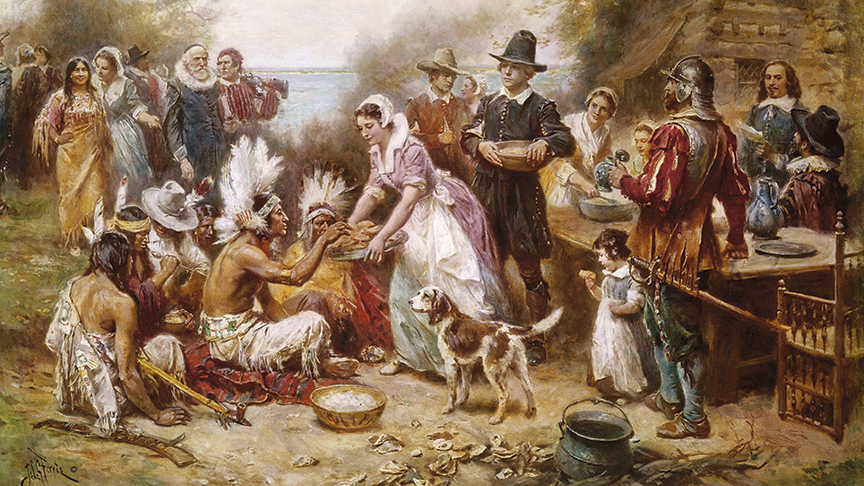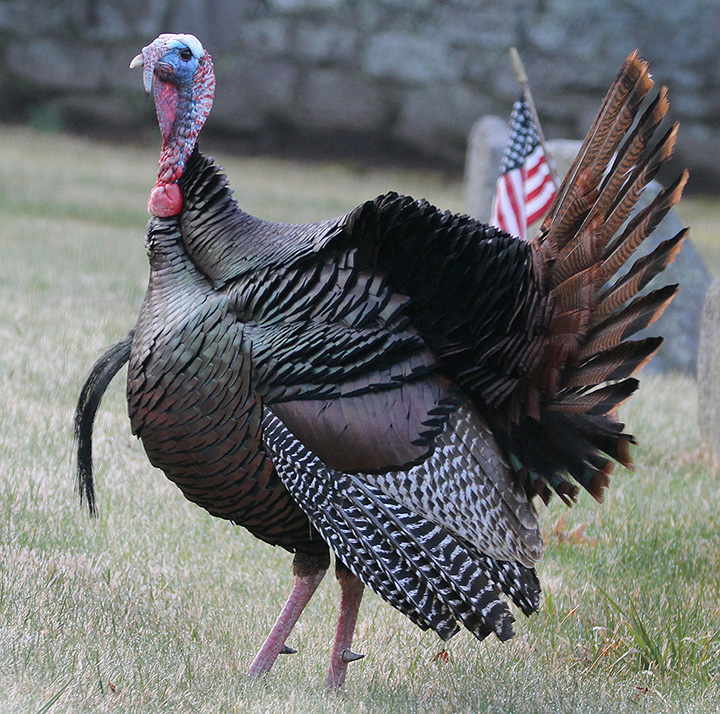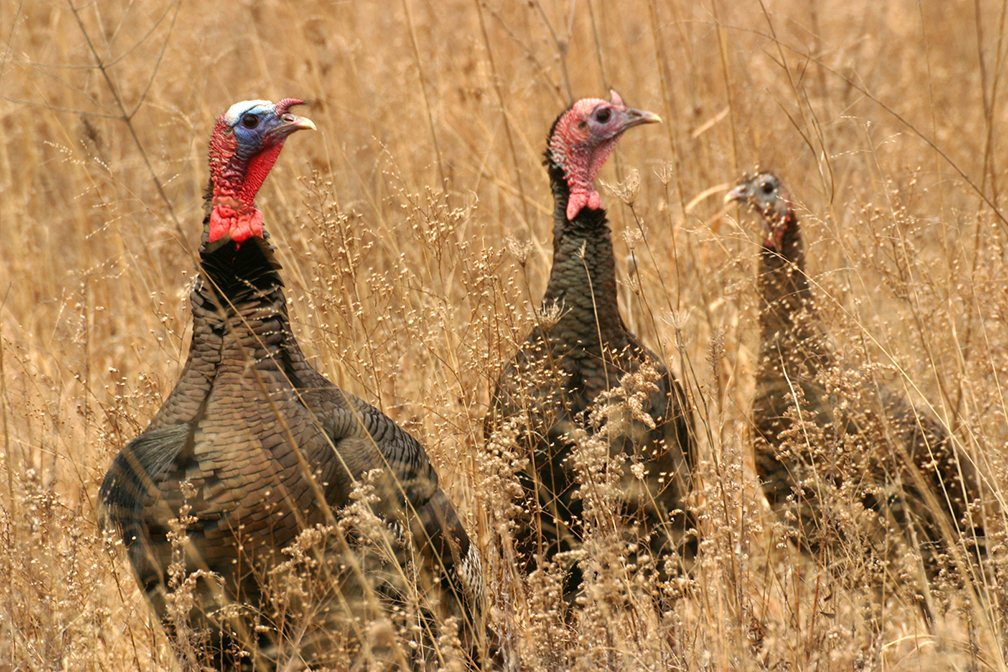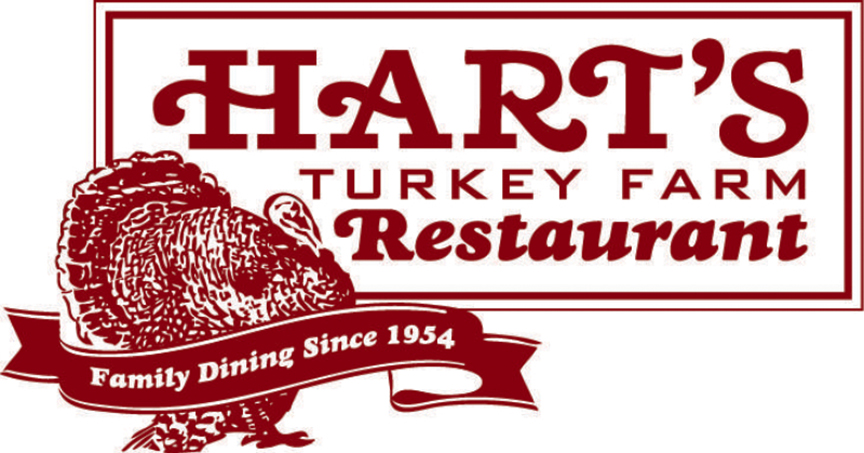Puritans In New Hampshire -The Coming Of A Thankful People

IMAGE: Artist Jean Leon Gerome Ferris created his oil painting to depict the first Thanksgiving as a peaceful affair celebrated by the pilgrims and the Native Americans with a bounty of feasting foods, including blueberries. The painting was completed around 1912.


by Robert Hanaford Smith, Sr.
Weirs Times Contributing Writer
THANKSGIVING.
That word is probably the one thing more than any other that we associate with the Pilgrims and Puritans. And they are also associated with the American Indians who joined them in Plymouth, Massachusetts for a Thanksgiving celebration in 1621.
The Pilgrims were the first settlers from England (via Holland) to settle in New England followed by Puritans who represented the Massachusetts Bay Colony in what became Salem and Boston. The difference between Pilgrims and Puritans involves their connection to the Church of England (Anglican). They were both not in complete agreement with the Church in England and many of them fled to be rid of its control over their religious practice, but the Pilgrims broke away entirely from the church while the Puritans stayed connected to the church in their mother country but tried to purify it by removing objectionable teachings and practices.
The colonists in Plymouth who arrived on the Mayflower were Pilgrims. The colonists that were part of the Massachusetts Bay Colony were Puritans who wanted to purify the teachings Church of England by putting the emphasis of their faith and practice strictly upon Biblical teachings.
The Puritans and Episcopalians (those loyal to the Church of England) were also the first white settlers in New Hampshire, though some of these were apparently more interested in commercial interests than enjoying freedom of religion.

There was a period of time from 1641 to 1679 when New Hampshire was “absorbed by Massachusetts” as the takeover was described by historian Everett Stackpole. During this time the Massachussetts Bay Puritans took a more firm control of the towns in New Hampshire and Maine.
This Thanksgiving Day of 2020 some may question what they have to be thankful for because of the impact of the coronavirus pandemic but we do well to remember that the Pilgrims of the Plymouth colony had a very difficult first year with the loss of approximately half their number by death. Still, they found things to be thankful to God for and observed three days of Thanksgiving in the Fall of 1621.
Thanksgiving time has become a traditional time for some to show thankfulness by giving to those in need. Governor John Winthrop of the Massachusetts Bay Colony whose influence spread into the original towns of New Hampshire had a reputation of being a strict, demanding overseer, although he was apparently looked upon with great respect in the Puritan settlements. The strict rules of conduct and intolerance of other religious beliefs were accepted by the people as necessary for the welfare of the colonists. Moreover, there is more to be said about Governor Winthrop than that he was a popular but strict leader of the Puritans of New England.
A book published in 1894 by the title of Footprints of Four Centuries, The Story of the American People, notes that “The usual impression regarding the Puritans is that they were austere, unsmiling men, with much fanaticism and little of the milk of human kindness.”

The book tells, however, of the kindness shown by Governor Winthrop to show another side of the Puritan character: “A neighbor, accused of stealing from Winthrop’s woodpile, was brought before him.
The Governor had announced that he would take such measures that the thief should never be able to rob him again, so, of course, the case attracted attention. “You have taken my wood,” said Winthrop, in effect, “You have my permission to keep on doing so. Help yourself as long as the winter lasts.”
The Governor was said to send his servant with messages to the poorer neighbors about dinner time to find out what they had to eat. When told that a particular neighbor family was without bread, or some other food item, Winthrop is said to have shared his food with them. One of Winthrop’s “most angry opponents” when he was in need was said to have received from the Governor the gift of a cow.
The book makes the bold statement of the colonial period that “…the New Englanders were the most truly benevolent and unselfish people of their time.” It also stated that “:…the New England Puritans were a peculiar and easily distinguished people.”
Concerning the homelife of the Puritan, it was described as “unselfish; he was profoundly regardful of his children, though he evinced that regard not by indulging them, but by painstaking discipline and a rigorous thrift, the better to provide for their future. It was a French Jesuit of the last century who testified that the New Englander…labored for his heirs. These early settlers made staunch neighbors.”

Stackole, in his history, presents a much less flattering account of the Puritans by emphasizing their lack of tolerance towards those who held different religious beliefs. They had been victims of intolerance in England but were over zealous in their efforts to keep their “pure” religious beliefs from being threatened by others. They felt that the Church of England (Anglican) had kept too many of the Roman Catholic ways and had not enacted enough change in the Reformation. The governments of the towns, though varying from town to town, were connected to the church, and the laws were based on Biblical precepts. The beliefs of the Puritan colonists were not unlike some evangelical groups of today, though the church laws which were also the civil laws of a town, were apparently more detailed and more strictly enforced than in today’s congregations with like beliefs based on Biblical teachings.
In New Hampshire, the town of Hampton, from its beginnings was considered a part of Massachusetts until New Hampshire was set apart as a separate province in 1679, and as such was under greater control of the Puritans than were the other three original New Hampshire colonial towns. The others were Dover, Portsmouth, and Exeter.
The Church at Portsmouth was Episcopal until the Puritans took control of the town during the “absorption by Massachusetts of the colony. If you are wondering what happened to the Puritan Churches, the answer is that they eventually became Congregational churches.
The Puritans stressed the importance of educating their children, especially in the matter of being taught to read so they could study the Bible. We don’t know how often they had Thanksgiving Days in those first few years of their occupation of America.
What we know about them reveals a people thankful to God for the blessings and opportunities they found in America, seen partially in the “Great Migration of Puritans to New England, including New Hampshire, in the decade from 1630 to 1640.
Robert Hanaford Smith, Sr., welcomes your comments at danahillsmiths@yahoo.com



